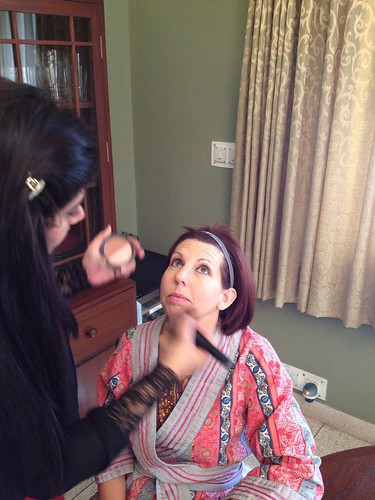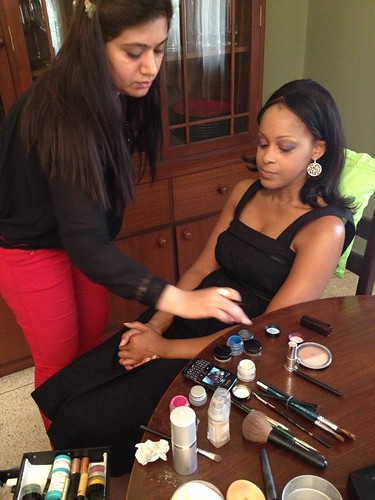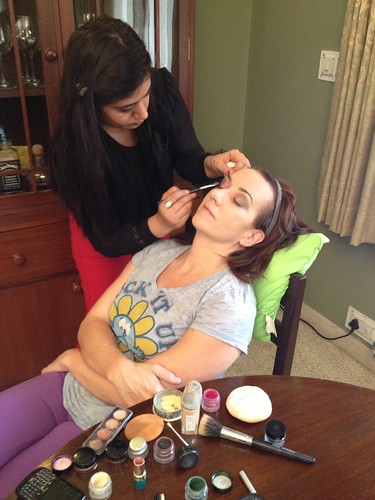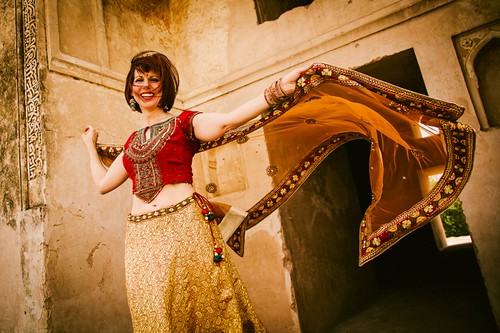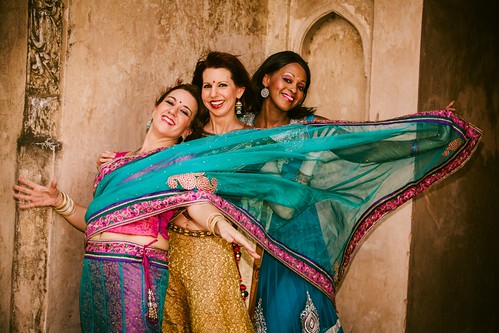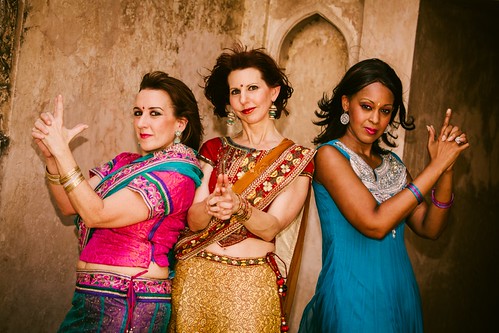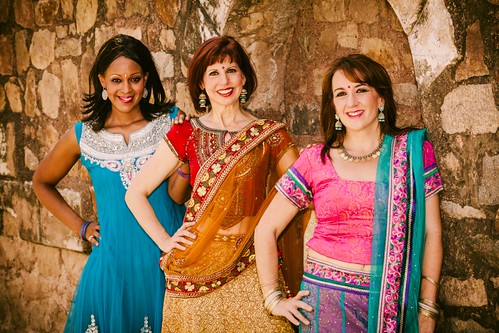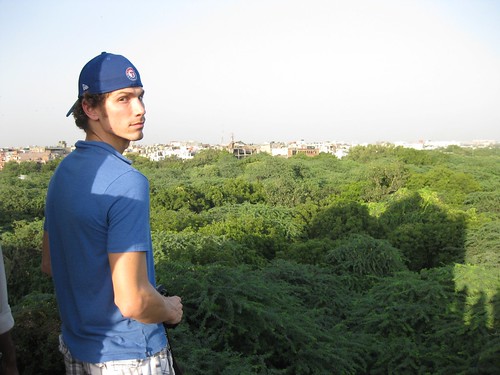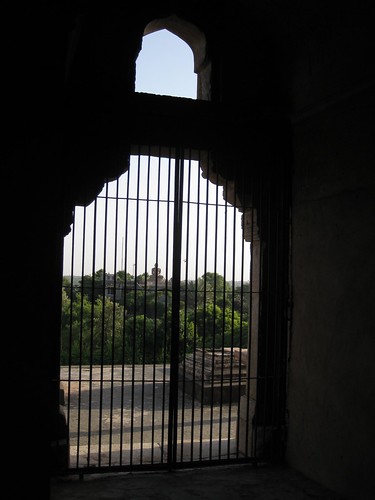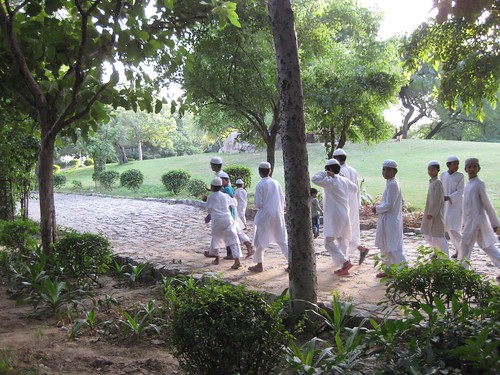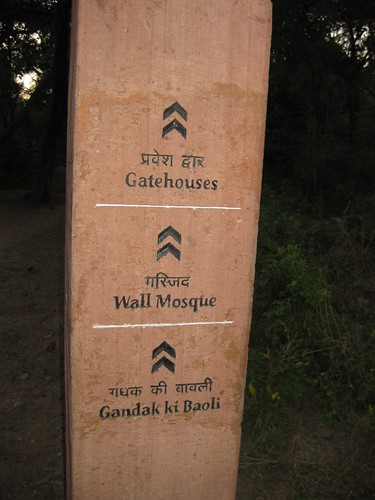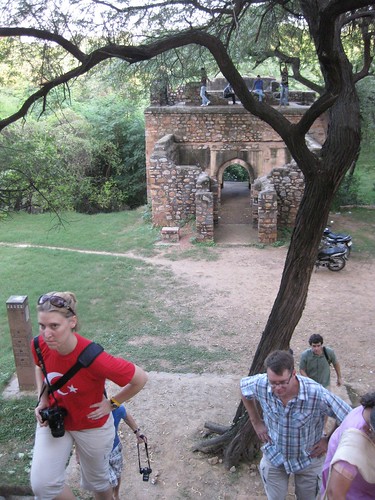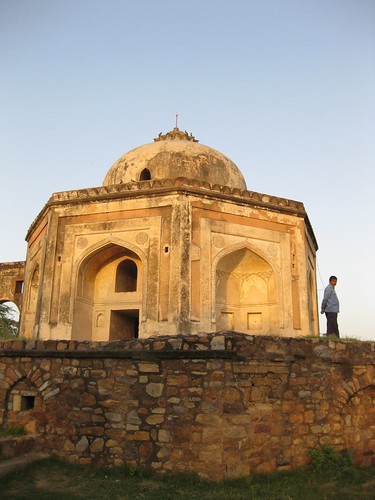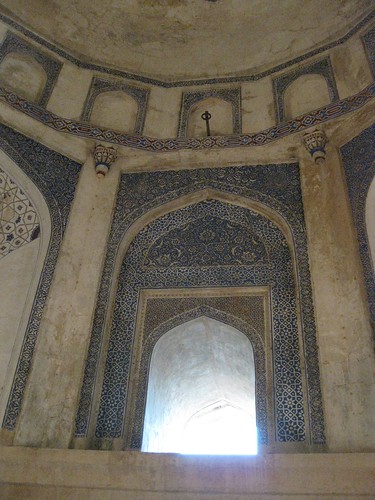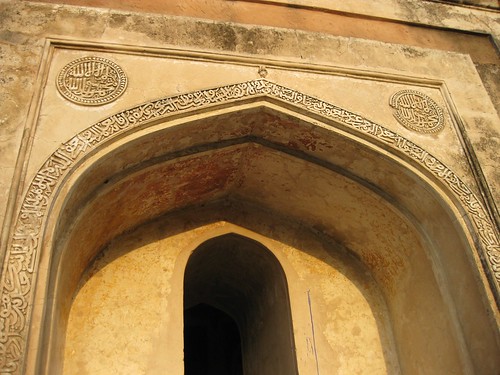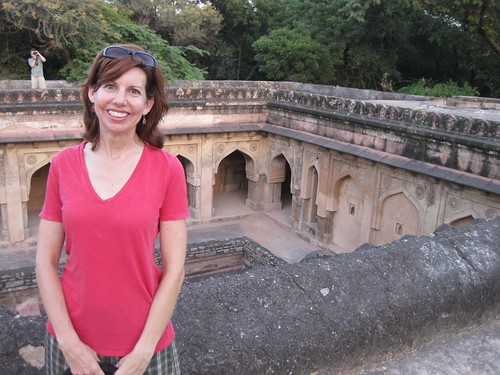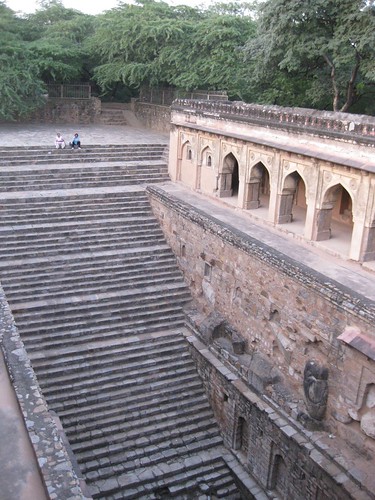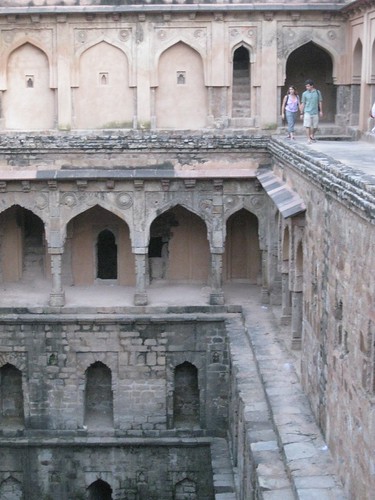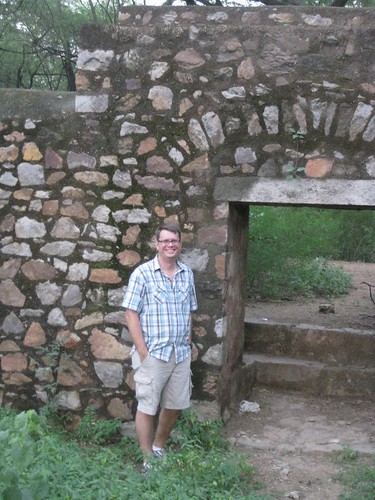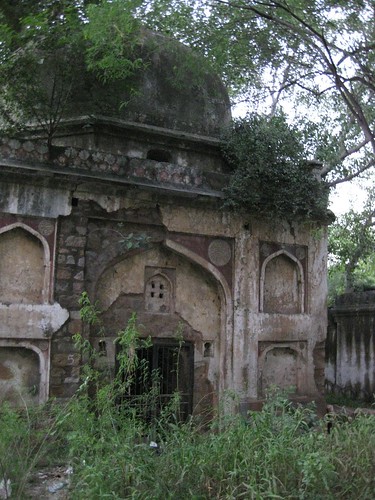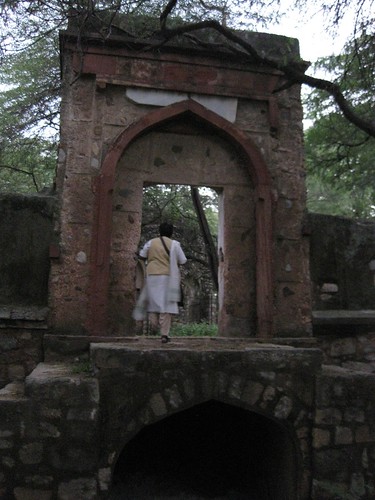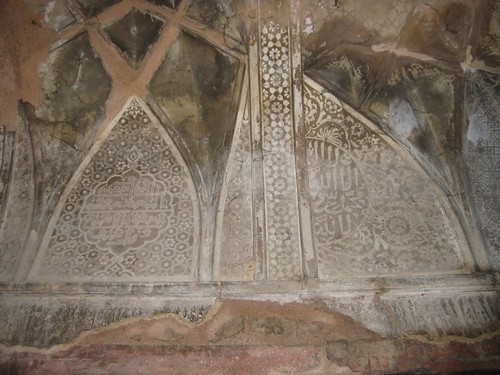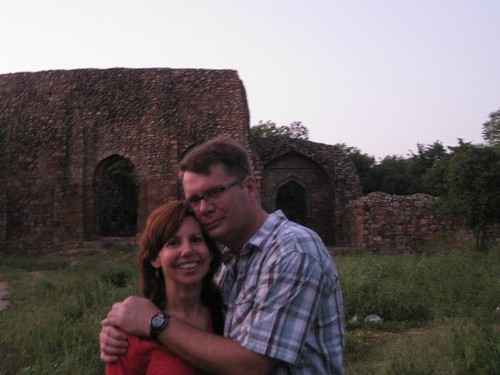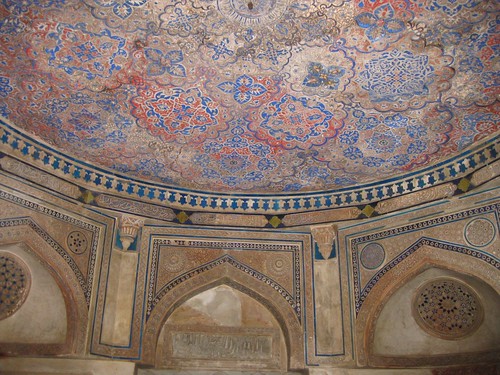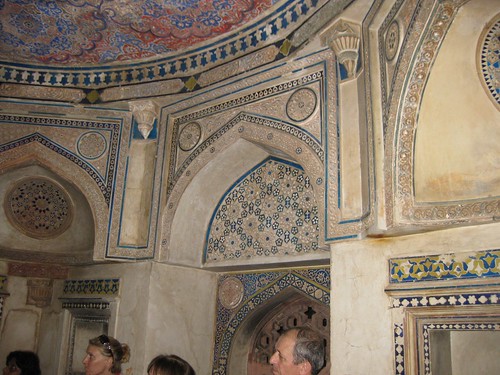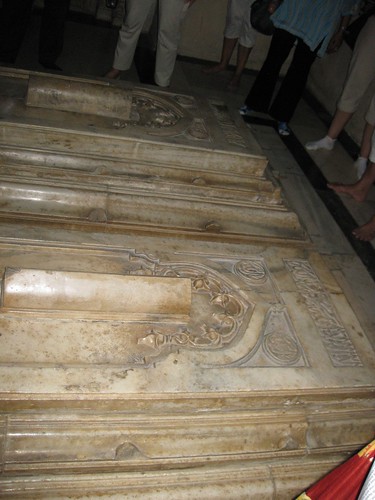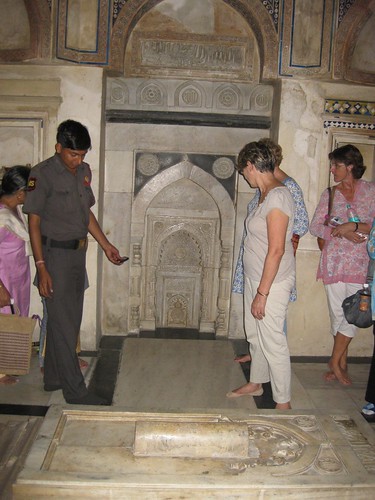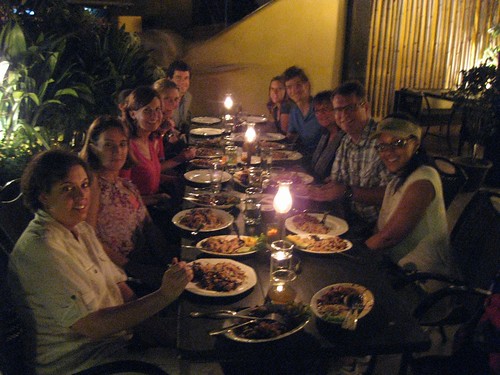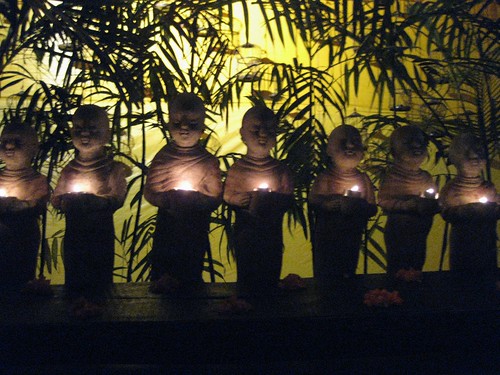Browsing through the shops in Delhi’s backpacker district, Pahar Ganj, I laughed with my friends Katrina and Nancy at the spangly belly dancing costumes for sale. “We should totally do a photo shoot wearing those outfits at some historical site!” we joked. Somehow that throw-away comment turned into a brilliant plan, which came to fruition last weekend.
The three of us became fast friends as “newbies” at the American Embassy School, and we’re now struggling with the knowledge that Katrina won’t be here after summer break; she’s heading back to the States. There couldn’t be a better going-away gift for this beautiful, elegant lady than Glamour Shots – Delhi Style. In addition, over the last two years, we three felt compelled to stage the clichéd Charlie’s Angels guns-drawn pose every time we spotted a camera. While those shots were all spontaneous, we couldn’t resist actually planning a special culminating picture.
As the day of the photo shoot approached, I tried on my costume. It was completely see-through and not at all flattering.
“Maybe we should wear our pretty Indian clothes instead,” I suggested. We each have saris, anarkalis or lehengas, which pop with color and better camouflage our flaws. We agreed to pose in our fancy outfits first, and then we’d change into our belly dancing costumes.
Around 7 a.m. Sunday, our make-up artist arrived (late) and went to work on me.
Yogita had no sense of humor about this experience, or maybe she just wasn’t a morning person. I told her I could do my own mascara, and she commanded me to make my lashes thick. “I’ll try,” I said, “but I only have about four lashes on each eye.” Katrina and Nancy laughed, but Yogita only responded drily, “I know. I saw.”
Katrina was next, then Nancy.
Finally we were ready to meet up with our photographer, Tim Steadman, who was patiently waiting at the Qutub Minar parking lot. Yogita clumsily banged her make-up suitcase down the stairs until it burst open and spilled her supplies everywhere. Already more than 30 minutes late, we rudely tiptoed over the scattered plastic boxes and brushes to dash out to my car.
Worried my long full skirt would get bunched under the car pedals, I opted to drive in capris. At the Qutub Minar parking lot, I pulled on my skirt and whipped off my pants before we phoned Tim to say we’d arrived. By the time we climbed into his car, it was about 9:45 a.m. and already 108ºF. He drove a short distance and pulled into a quiet road leading to the Mehrauli Archaeological Park, where we ladies had once visited on a walking tour. Check out MEHRAULI ARCHAEOLOGICAL PARK – AN URBAN OASIS. If you don’t feel like reading my old blog post, here’s a paragraph about the spot Tim chose for the day:
Sir Thomas Metcalfe, who was the East India Company’s resident at the Mughal Court, constructed his 19th-century country house right over the 17th-century mausoleum of Muhammad Quli Khan (an attendant to the Mughal emperor Akbar and stepson of Akbar’s wet nurse). Metcalfe’s dining room was apparently directly over Khan’s tomb, and he further embellished the area with pavilions, a dovecote and a waterway to bring visitors to the estate by boat.
Unfortunately, getting there required a bit of walking and climbing of steep steps. This trek was much easier on the aforementioned walking tour in appropriate footwear and sensible clothes. I tottered in my strappy sandals over the lawn and up the broken stone steps, clutching my wadded-up tulle dupata in one sweaty hand and layers of heavy polyester skirt fabric in the other. We took refuge in the shade but couldn’t avoid the scorching breeze that evaporated all the moisture from our eyes and lips.
I think we were going for sultry here, but we mostly just look pissed.
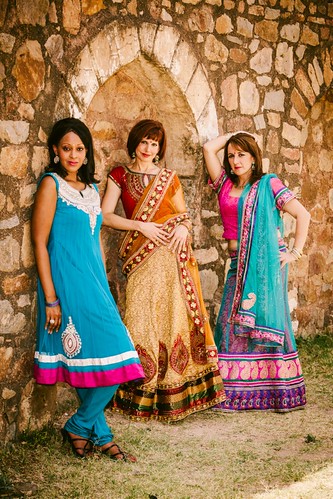
That’s the 12th-century Qutub Minar in the background. Standing on the grounds of Delhi’s “first city” dressed in fancy Indian garb felt kinda magical.
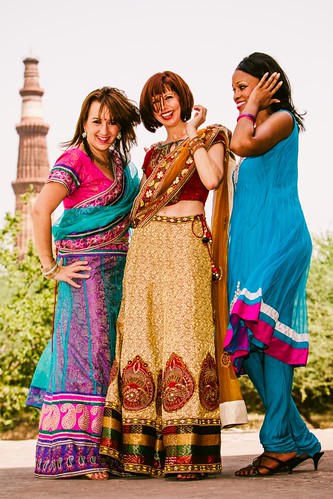
Unlike Yogita, Tim had a wonderful sense of humor. “Just put one hand on your hip like this,” he would say, striking the pose. “And then stick out your other hip and look off in the distance.” It’s a good thing he knew how to pose us because only Katrina seemed to have a natural flair for modeling. I couldn’t help acting ridiculous, quoting Zoolander and Austin Powers. “Now you’re a lemur!”
We eventually got around to our Charlie’s Angels pose, accentuated with a nice windblown hair effect.
Not yet ready to wrap it up, we threw in a little Matrix action, too.
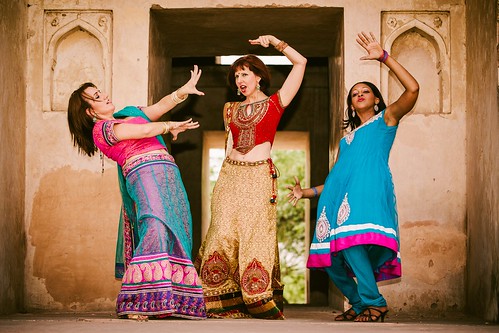
By the time we trudged back to Tim’s car, sweaty and dehydrated, we had lost the motivation to peel off our dresses and stage a redux in the belly dancing costumes. Whew!
Looking at Tim’s photos, we can’t help but notice our saggy baggy flabby bits, but it’s also easy to see the beauty – inside and out. This was a joyous, silly, beauty-filled day, and I felt especially grateful to have such amazing ladies in my life.
Here’s a video with some of my favorite shots.
Want more? Check out my flickr album, Charlie’s Angels – Delhi Style, with all 160 photos (80 shots in both color and B&W).


